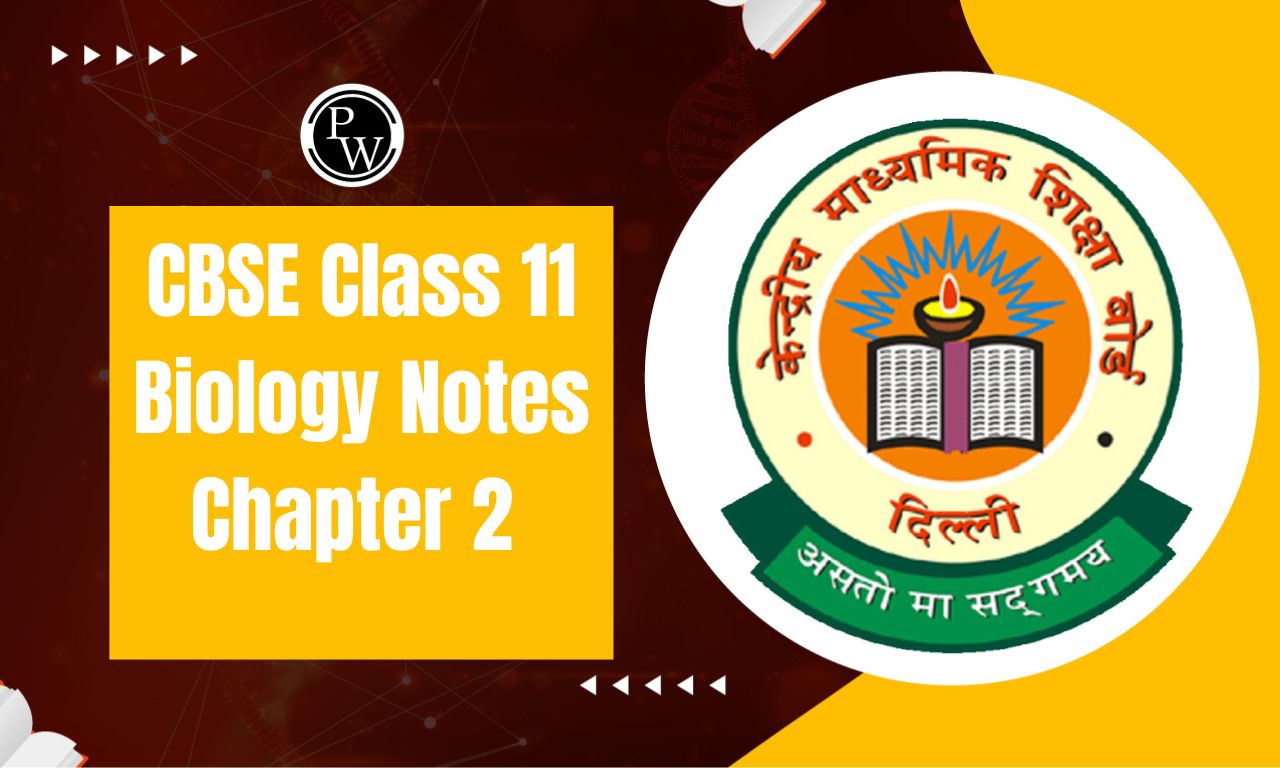
Important Questions for Class 11 History Chapter 3: These important questions for Class 11 History Chapter 3 Nomadic Empires are important for students preparing for their exams. The questions cover key topics such as the rise of the Mongol Empire under Genghis Khan, the military strategies that made the Mongols so powerful, and their influence on trade through the Silk Road. These questions are created to help students gain a deeper understanding of the chapter and ensure thorough preparation for their exams.
Important Questions for Class 11 History Chapter 3 Overview
Chapter 3 of Class 11 History titled Nomadic Empires, focuses on the rise, expansion, and influence of nomadic empires, particularly the Mongol Empire and other nomadic societies. The chapter covers the rise of the Mongol Empire, focusing on the leadership of Genghis Khan, who united the Mongol tribes and expanded the empire through effective military tactics. Students are expected to explore how the Mongols governed their vast empire, administered conquered territories, and managed their army. Other important topics include the Silk Road, which facilitated the exchange of goods, ideas, and culture, and the impact of Mongol invasions on regions like Russia and the Middle East. The decline of the Mongol Empire and the factors leading to its fall, such as weak leadership and overexpansion, are critical for understanding the eventual breakdown of the empire. By studying these important questions, students will develop a comprehensive understanding of the role nomadic empires played in shaping world history, and how they influenced the development of trade, culture, and political systems across vast regions.Important Questions for Class 11 History Chapter 3 PDF
The PDF link for the Important Questions for Class 11 History Chapter 3 Nomadic Empires is available below. You can download the PDF to access a comprehensive list of important questions that will help in understanding key concepts from this chapter and assist you in your exam preparation. By using this PDF, students can practice and better understand the important concepts of the chapter, helping them prepare effectively for exams. The link to download the PDF is available below.Important Questions for Class 11 History Chapter 3 PDF
Important Questions for Class 11 History Chapter 3 Nomadic Empires
Here are the questions and answers from Chapter 3 Nomadic Empires of Class 11 History-Question 1: What do you understand by the term "Yasa"? Explain.
Answer:
The term "Yasa" refers to the code of law established by Genghis Khan. It was announced in 1206 at the Quriltan, which was a gathering of Mongol tribes. The word "Yasa" means law or decree. This code addressed important matters such as the organization of the army, the postal system, and the hunting process. Over time, the Mongols used it to refer to Genghis Khan's legal code, a set of rules that helped unify the diverse Mongol tribes under a single law. It aimed to assert the authority of Genghis Khan as a powerful law-giver, much like other ancient rulers.Question 2: Why did Genghis Khan gain an identity as a conqueror and a brutal murderer despite being one of the greatest leaders?
Answer:
Genghis Khan's reputation is complex. While he was an extraordinary leader who unified the Mongol tribes and built one of the largest empires in history, his image is also marred by the brutal massacres he ordered in cities like Nishapur, Herat, and Baghdad. The scale of destruction he caused has overshadowed his leadership qualities in the eyes of many. The violence and ruthlessness of his conquests have led to his identity as both a great leader and a brutal conqueror.Question 3: What ensured the creation of such a vast Mongol Empire?
Answer:
The key factor in the creation of the vast Mongol Empire was the leadership of Genghis Khan. His vision and determination to unite the fragmented Mongol tribes were crucial. His military strategies, organizational skills, and leadership qualities allowed him to consolidate power and expand his empire across a vast region. The Mongols’ strong nomadic traditions and the central leadership of Genghis Khan provided the foundation for their conquests, which eventually led to the formation of a transcontinental empire.Question 4: Discuss the implication of the term "barbarian."
Answer:
The term "barbarian" originally came from the Greek word "Barbaros," meaning non-Greek. It was used to describe people whose language and culture were different from the Greeks. Over time, the term came to refer to people who were perceived as uncivilized or inferior. The term was often used by the Greeks and Romans to stereotype various groups, such as the Germanic tribes, Gauls, and Huns. It was associated with negative traits like cruelty, sloth, and the inability to govern, reflecting the prejudices of the more "civilized" societies.Question 5: Reproduce the warning given by Mongke, the grandson of Genghis Khan, to the French ruler Louis IX, and discuss the hidden intention behind it.
Answer:
Mongke’s warning to Louis IX was: “In heaven, there is only the Eternal sky, on Earth, there is only one lord, Genghis Khan, the son of Heaven. When the world is united under the Eternal Heaven, you will understand what we are capable of. If you fail to recognize the power of the Eternal Heaven and think that your land is too distant and secure, you will soon learn the consequences.” The hidden intentions of this warning were to assert the overwhelming power of the Mongol Empire and the inevitability of its global dominance. Mongke emphasized that no matter how distant or protected a region might seem, it was no match for the reach of the Mongols, and resistance would be futile.Question 6: Discuss the rise of new political trends among the Mongols after Genghis Khan.
Answer:
After Genghis Khan’s death, the Mongol Empire underwent significant changes. While the empire initially expanded rapidly, by the 1260s, their westward expansion began to slow. Mongol rulers like his sons and grandsons began focusing more on the conquest of China and other parts of Asia rather than further campaigns in Europe. This shift led to internal rivalries among Genghis Khan’s descendants, particularly between the Jochids and Toluyid branches of the family, which contributed to the eventual fragmentation of the empire.Question 7: What was the political set-up in the Mongol Empire? Discuss.
Answer:
The Mongol political system was organized around a military structure. The empire was divided into units, with the largest being the Turman , which consisted of 10,000 soldiers. Each of Genghis Khan’s sons controlled different parts of the empire, and they ruled these regions as if they were federations. The Quriltan (council of Mongol chiefs) played a crucial role in decision-making, such as determining the distribution of land, military campaigns, and succession. Genghis Khan’s close friends were given special titles and roles in the administration.Question 8: Why was there a conflict of interest between pastoralists and peasants? Would Genghis Khan have expressed such sentiments to his commanders?
Answer:
The conflict between pastoralists and peasants arose because the pastoralists often encroached on the lands of the peasants to graze their herds. This conflict was fueled by differences in their economic activities while peasants were engaged in farming and trade, pastoralists relied on animal husbandry. Genghis Khan would not have expressed such sentiments to his commanders, as these issues were addressed later by his descendants, particularly by Ghazan Khan, who advised against looting peasants.Question 9: Why can Yasa be considered an empowering ideology?
Answer:
Yasa was empowering because it provided the Mongol people with a sense of unity and identity. It helped the Mongols maintain their distinct culture while also enabling them to govern vast urban societies with different traditions. The Yasa allowed Genghis Khan to assert his authority over his subjects and maintain order across the empire. It became a symbol of Mongol unity and strength, encouraging the Mongols to take pride in their laws and customs.Question 10: Did the meaning of Yasa change over time? Why did Hafiz-i-Tanish refer to Genghis Khan in connection with Abdullah Khan’s prayer?
Answer:
The meaning of Yasa did not significantly change over time, but it became more ingrained in Mongol culture and governance. Hafiz-i-Tanish referred to Genghis Khan in connection with Abdullah Khan’s prayer to highlight how the legacy of Genghis Khan continued to influence Mongol rulers, even centuries after his death. He pointed out that Abdullah Khan's actions, though harsh, were seen as noble deeds in the Mongol tradition, reflecting the enduring influence of Genghis Khan's ideals.Benefits of Solving Important Questions for Class 11 History Chapter 3
Solving important questions for Class 11 History Chapter 3 provides several benefits that enhance your understanding and academic performance:Reinforces Key Concepts: By addressing important questions, you review essential concepts and ideas presented in the chapter, which helps in solidifying your understanding. This leads to a clearer grasp of historical events, processes, and their implications.
Improves Retention: Solving important questions helps improve memory retention. Repeated exposure to critical information through question-solving allows the brain to store and recall this information more easily during exams.
Enhances Exam Preparation: Practicing important questions prepares you for the type of content that may appear on your exams. It familiarizes you with the exam format and ensures you're better equipped to answer questions effectively, which can improve your exam performance.
Boosts Analytical Skills: Many history questions require you to analyze and interpret events from multiple perspectives. This not only improves your analytical thinking but also helps develop critical reasoning, enabling you to connect historical events and understand their broader significance.
Improves Writing Skills: Writing detailed answers to important questions helps in honing your writing skills. You learn to organize your thoughts clearly and present them in a coherent manner, which is essential for writing good exam answers.
Helps Identify Knowledge Gaps: Solving important questions can highlight areas where your understanding is weak. By recognizing these gaps, you can focus on improving specific topics before the exam, ensuring you're well-prepared.
Helps in Revision: Solving important questions is an excellent revision resource. It enables you to quickly revise and consolidate your knowledge before exams, saving you time and effort while ensuring you're well-prepared.
Important Questions for Class 11 History Chapter 3 FAQs
What were Nomadic Empires?
Who was Genghis Khan, and why is he significant?
Why are the Mongols often referred to as barbarians?
What were the key features of Mongol society?










